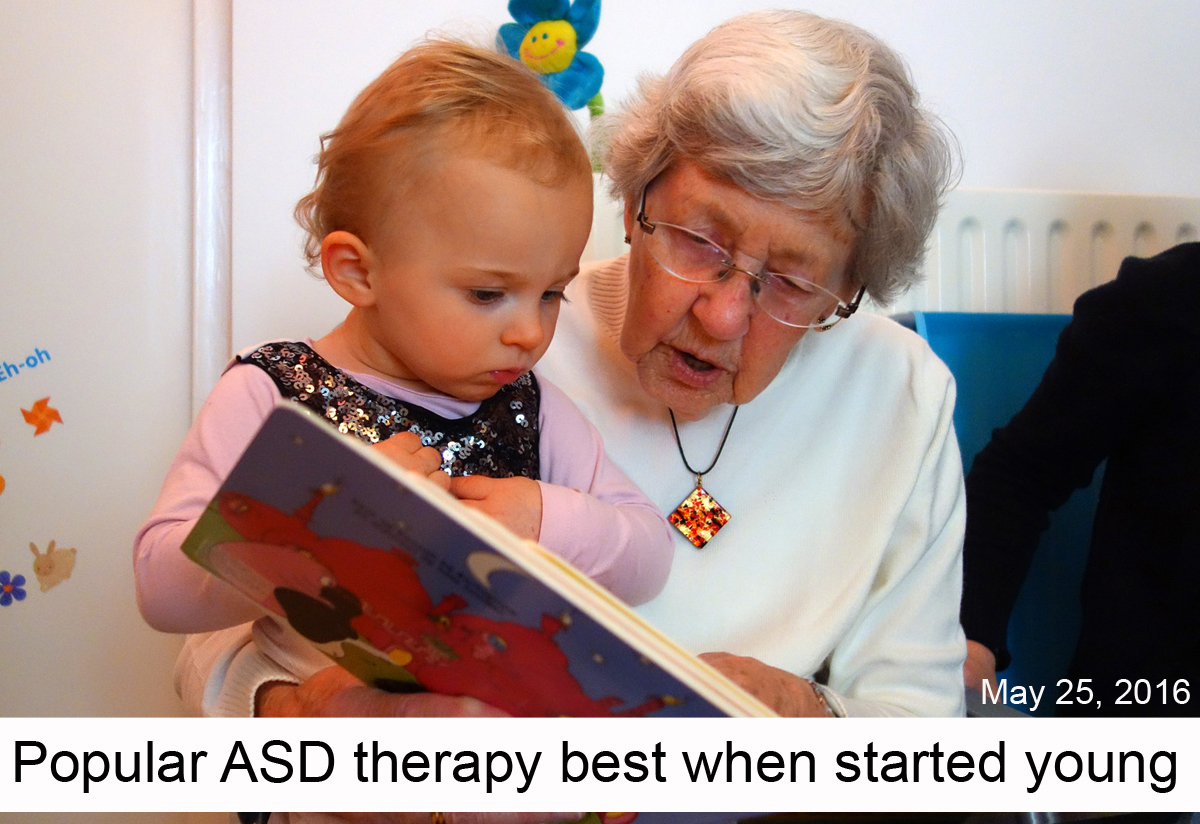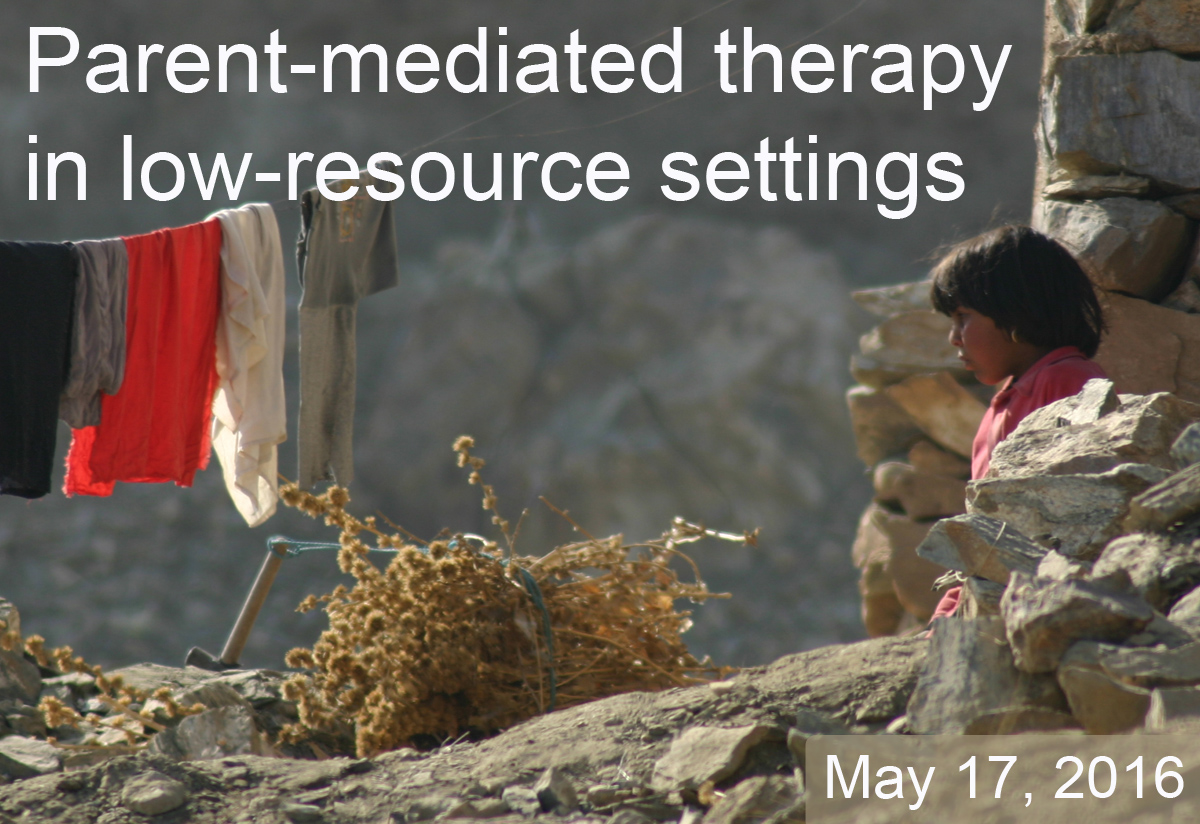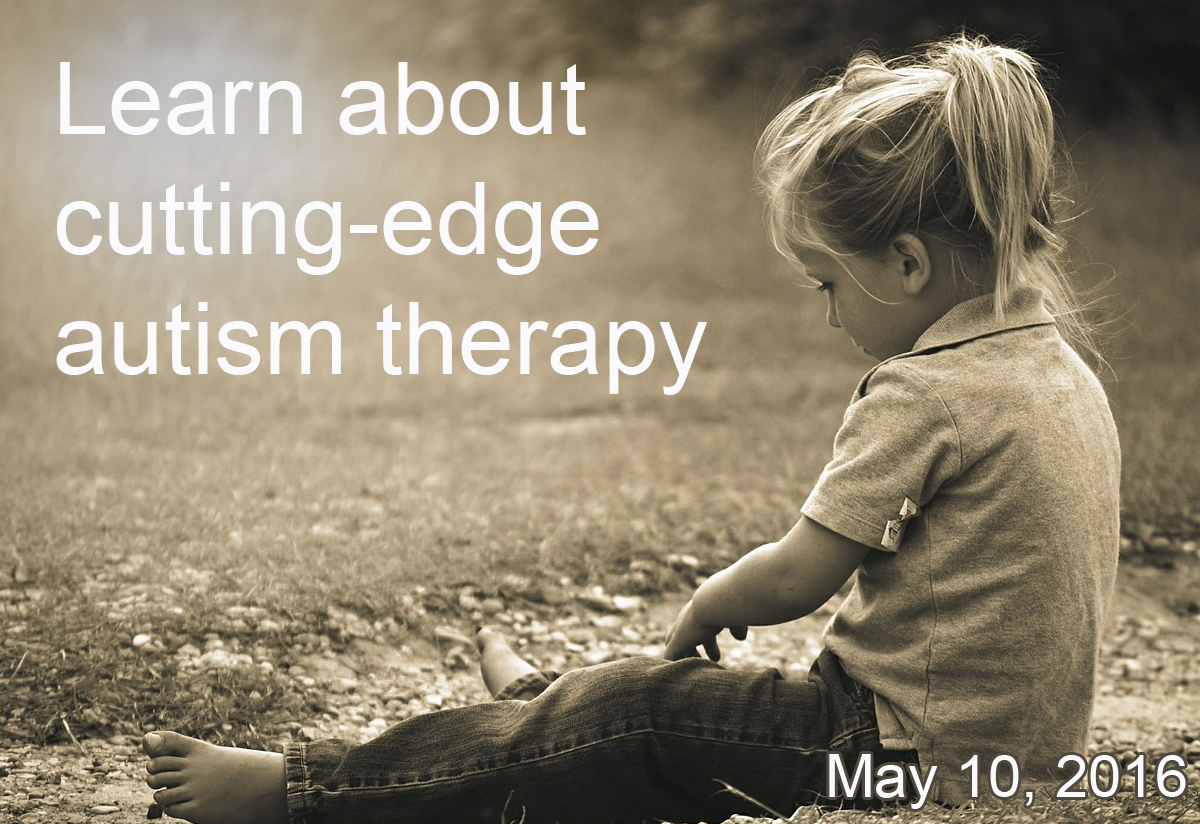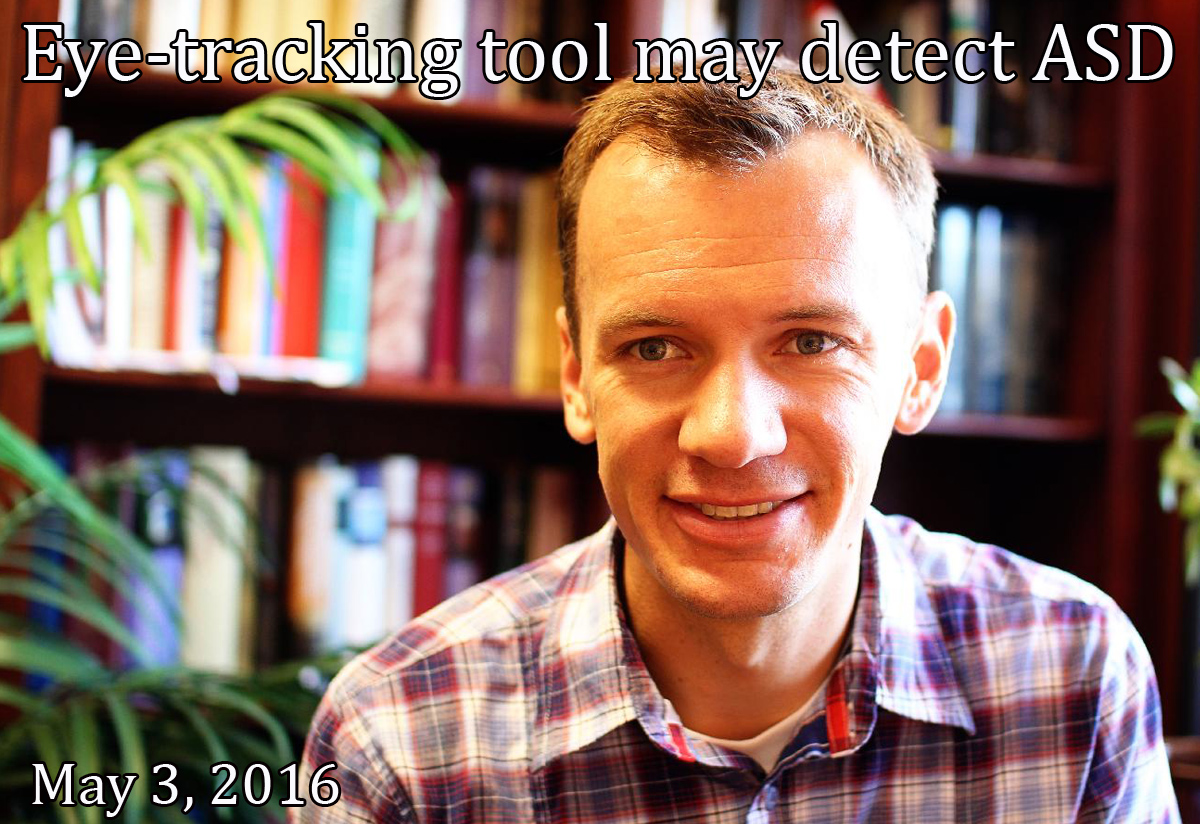Archives
May, 2016
Select a different month in the archive
ESDM Most Effective in Young Children, Study Finds
By Chelsea E. Toledo, M.A. on May 25, 2016

Background: The Early Start Denver Model (ESDM) is an intervention designed for children 12 to 60 months of age with autism spectrum disorder (ASD). A team of trained professionals including therapists, teachers, childcare workers and psychologists deliver this program; parents receive guidance from the therapy team as well. ESDM aims to help children gain social skills and engage in interpersonal relationships. It uses child-directed methods like simultaneous movement, rhythm, and reciprocal behavior.
What’s New: On March 28, 2016, the Journal of Autism and Developmental Disorders published a study exploring the effects of ESDM in children of different ages. The researchers administered diagnostic questionnaires to assess verbal and non-verbal communication, as well as ASD severity, in 32 children between 18 and 48 months of age and in 28 children between 48 and 62 months of age. Prior to the questionnaires, the children participated in ESDM for a year. While all participants improved non-verbal communication, the younger group had significantly greater improvement on the verbal diagnostic questionnaire. None of the children reduced their ASD severity scores.
Why it’s important: This study supports the basic principal underlying ESDM – that early intervention is most effective, especially in achieving gains in verbal communications. Future studies could compare gains with a control group not receiving ESDM therapy to more thoroughly evaluate program effectiveness.
Help me understand :
| Source(s) : |
| Tweet |
Cheaper Behavioral Therapy Studied for Low-Income Countries
By Shana R. Spindler, PhD on May 17, 2016

Background: Children with autism often work with a therapist to improve communication and social skills. Sometimes therapists give parents strategies for interacting with their child. This is the case with the Preschool Autism Communication Trial (PACT).
During PACT therapy, professional speech and language therapists teach parents how to adjust their communication and social interactions to the needs of each child. Previous studies have shown an increased cost of therapy with PACT, but no significant difference in overall outcome to warrant the cost. In 2015, a collaboration of researchers in India, Pakistan, and the United Kingdom modified the PACT therapy for children with autism living in low- to middle-income countries.
What’s new: Researchers tested the modified PACT-based therapy, called PASS (Parent-mediated intervention for Autism Spectrum Disorder in South Asia) in India and Pakistan. The researchers randomly divided 65 children with autism between the ages of 2 and 9 into two groups. One group received 12 sessions of PASS plus treatment as usual, while the other group continued their typical activities during that time.
During PASS sessions, a health worker and parents watched video tapes of the parents and child playing together and discussed strategies to improve the child’s skillsets. The researchers found that PASS improved the coordination and initiation of social interactions between parents and children with autism in a low-income setting.
Why it’s important: The authors report that this is the first rigorous trial to test an autism therapy in a low- to middle-income country. While PASS showed important positive outcomes, it also linked to decreased shared attention between parents and children. This previously unreported effect of a PACT-based therapy adds to conflicting reports of its effectiveness for autism.
Help me understand :
| Source(s) : |
| Tweet |
Cutting-edge Autism Therapy May Lessen Problem Behaviors
By Shana R. Spindler, PhD on May 10, 2016

Background: Have you ever wondered what controls your heart rate? The autonomic nervous system controls all non-voluntary movements in your body, like the beating of your heart and contractions of your stomach and intestines. In some individuals with autism, the autonomic nervous system doesn’t work properly. This may lead to a less intense response to social stimuli. Some researchers believe that activating the autonomic nervous system may help individuals with autism respond to social cues in a more typical way.
What’s new: A cutting-edge procedure called transcranial magnetic stimulation (TMS) may help children with autism lessen hyperactivity, inappropriate speech, and repetitive behaviors by adjusting their autonomic nervous system activity, according to a study published March, 2016. The researchers used repetitive magnetic fields to excite neurons in a part of the brain behind the forehead in 33 children with autism. The children each participated in 12 weekly sessions of TMS. During the treatment, the childrens’ autonomic nervous system measurements improved, and following treatment, several behavior scores got better.
Why it’s important: Compared to previous studies of TMS, this study increased the number of children treated and allowed children from all severities of the autism spectrum. The positive results of the study lead the way for researchers to create randomized, controlled clinical trials to test if TMS treatments work better than other therapies.
Help me understand :
| Source(s) : |
| Tweet |
Eye-Tracking Tool May Detect ASD in Adults
By Chelsea E. Toledo, M.A. on May 3, 2016

Background: Autism spectrum disorder (ASD) is characterized by differences in communication, social interaction and behavior. A key indicator for ASD in infants and toddlers is abnormal gaze, as people with ASD tend to focus on different objects or movements than their typically developing peers. For example, someone with ASD would be less likely to make eye contact with another person as he or she spoke.
What’s New: On March 23, 2016, the journal Molecular Autism explored the use of an eye-tracking system called Gazefinder, which was developed to detect ASD in toddlers. The researchers showed scenes from movies to a study group of 26 males with ASD between the ages of 15 and 41 and a comparable group of individuals with typical development. Measuring the time participants’ eyes were fixated on a particular object or motion, researchers found that the ASD group spent significantly less time focused on socially significant objects or movements. For example, when looking at the face of a person sitting silently, the ASD group was more likely to focus on the mouth, as opposed to the typically developing group, who focused on the eyes.
Why it’s important: Atypical gaze is already a screening indicator for ASD in infants and toddlers. However, this study provided a concrete measure to distinguish much older people with ASD from their typically developing peers. Future research could explore the efficacy of this technique in females and in older children.
Help me understand :
| Source(s) : |
| Tweet |

